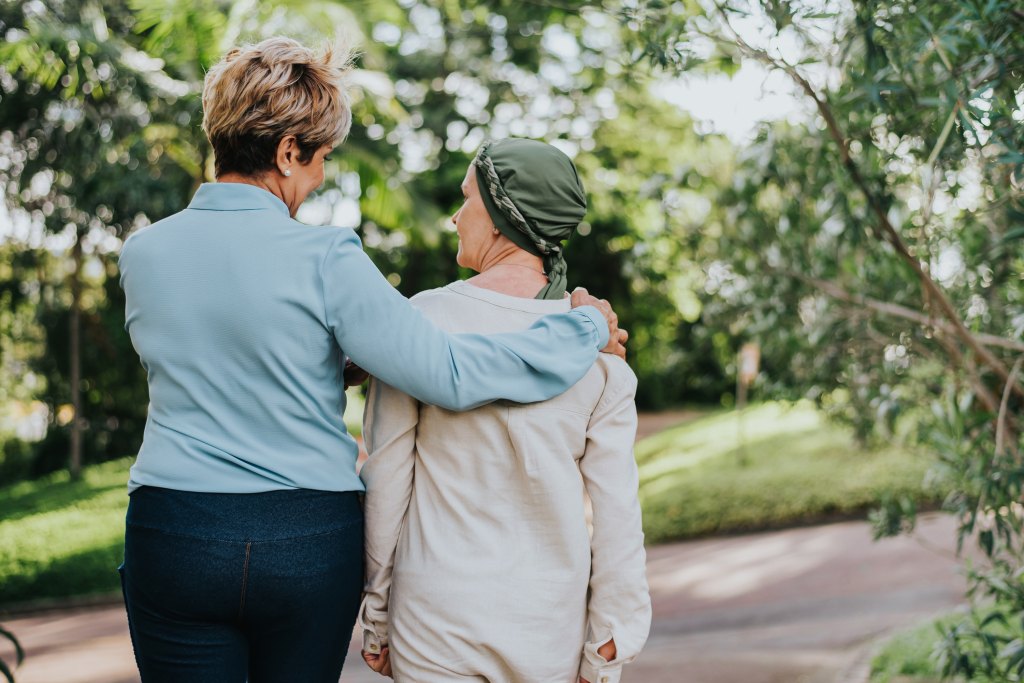On Christmas Day, Kate Middleton shared a rare update on her health. The Princess of Wales was diagnosed with cancer in March 2024, though most details remain private. Many admire the beloved royal for her advocacy for children’s mental health, dedication to her royal duties and timeless fashion choices. To understand more about her health journey, we spoke to healthcare professionals who explain what Kate’s experience highlights about cancer treatment and recovery.
Kate Middleton shares health update
On December 25, 2024, the princess shared how relatable the cancer experience is for many families. She took the time to speak with the public at Sandringham, where the royal family attended their traditional Christmas service.
“The amount of people who have written this year is extraordinary, and I think cancer just really does resonate with so many families,” the 42-year-old royal remarked during an exchange with Rachel Anvil, a healthcare worker from Cambridge’s Royal Papworth Hospital. Anvil, who began her career in a cancer unit, called Middleton an “inspiration” for how she handled her diagnosis and treatment.
Kate Middleton’s cancer diagnosis and treatment timeline
In March 2024, Middleton revealed her cancer diagnosis, two months after undergoing planned abdominal surgery in January. While she hasn’t publicly shared the specific type of cancer, Middleton announced that she had begun preventative chemotherapy.
By June, the princess attended the Trooping the Colour parade, marking her first public engagement since Christmas 2023. In September, she shared a health update, revealing that she had completed chemotherapy. “Doing what I can to stay cancer-free is now my focus,” Middleton said at the time. “Although I have finished chemotherapy, my path to healing and full recovery is long, and I must continue to take each day as it comes.”
Despite limiting her royal engagements for the remainder of the year, Middleton continued to make key appearances. This included hosting her annual “Together at Christmas” concert at Westminster Abbey in early December 2023.
What we know about Kate Middleton’s cancer

Middleton shared that her cancer was discovered in post-operative tests after a planned abdominal surgery.
“Cancers in the abdomen can include liver cancer, pancreatic cancer, stomach cancer and cancer of the gallbladder, bile duct and the large and small intestines,” says Alessio Pigazzi, MD, PhD, FACS, FASCRS, Executive Director of Colorectal Cancer at City of Hope. Symptoms often remain subtle until later stages, making early detection challenging.
“With so many organs, it is not an uncommon location for cancers to be found,” adds Tracy Brooks, Associate Professor of Pharmaceutical Sciences at Binghamton University. “Even the finding of cancer after another surgery is not uncommon.”
The role of preventive chemotherapy in Kate Middleton’s health

Middleton’s treatment included preventive chemotherapy, also known as adjuvant chemotherapy. According to Dr. Pigazzi, this type of treatment begins after “primary treatment, such as surgery, is completed. It is intended to eliminate cancer cells that may still be present in the patient’s body.” He adds that it is commonly used for “breast, colon, lung and ovarian cancers, including in cases where the cancer has spread to nearby lymph nodes.”
Conversely, traditional chemotherapy “usually refers to the active treatment of evident disease—a measurable tumor/metastases,” says Brooks. The usage depends on the mass’s response, as well as biomarkers from blood or urine. “This path often requires more chemotherapy and for longer, although those details can vary,” she adds.
So what would influence a decision to pursue this approach? “Preventative measures are often elected by those with higher risk factors of recurrence—perhaps some evidence that cancer cells moved away from a primary lesion, even if the surgery seemed to be complete, or maybe some genetic markers,” explains Brooks. She notes that in most cases, patients must weigh the risks with their health and the risk of recurrence.
How long did Kate Middleton’s cancer treatment take?
While Middleton completed her chemotherapy within six months, her recovery process is ongoing. Importantly, cancer recovery doesn’t end when treatments stop—it often involves physical and emotional rehabilitation.
“Typical treatments of radiation and (the more toxic) chemotherapy are usually a balance of the patient’s health versus the cancer’s response and may be from a few months to a year of treatment for active disease,” says Brooks. “Preventative measures are, generally, for a shorter duration, but this again varies by type of cancer.”
However, Dr. Pigazzi stresses that treatment timelines aren’t black and white. “There are many different factors that determine how long a person’s cancer treatment lasts, including the type of cancer it is, whether or not it has spread, where it’s located in the body and the size of the tumor or tumors,” he says.
Looking ahead at Kate Middleton’s health and recovery

Middleton’s comment about taking recovery “day by day” highlights the reality of cancer survivorship. After treatment, patients often require continued care, including therapies to rebuild strength and manage the residual effects of treatment. Support networks—whether family, friends or fellow survivors—play a pivotal role in this phase.
“For people who have survived cancer, reoccurrence is always one of their primary concerns,” acknowledges Dr. Pigazzi. “While we can’t know if or when a person’s cancer will return after treatment, helping patients during survivorship is an important part of their care. This includes monitoring regularly with tests and conducting follow-up examinations after treatment is completed.”
This content is not a substitute for professional medical advice or diagnosis. Always consult your physician before pursuing any treatment plan.




